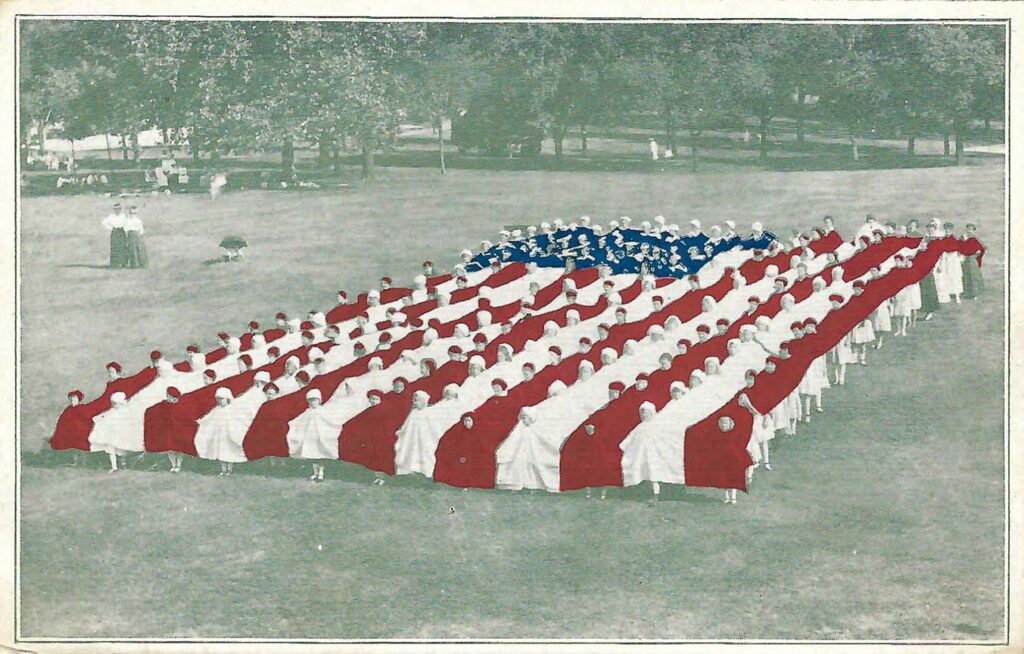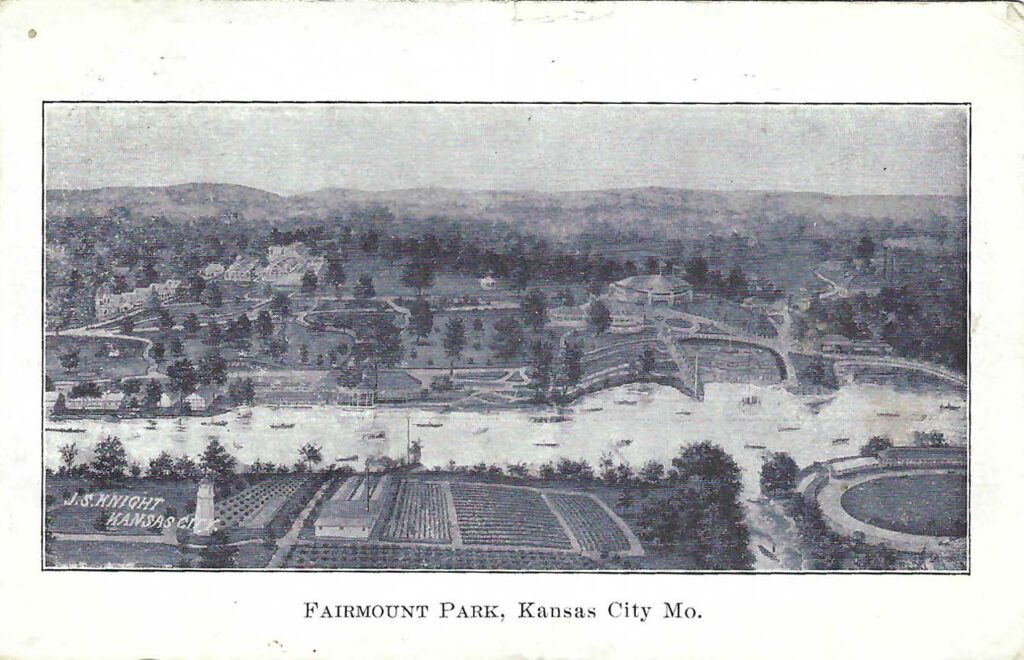
Michael Bushnell
Publisher
This extremely rare, hand-colored postcard depicts the Living Flag presentation done under the auspices of the Women’s Christian Temperance Union (WCTU) at the Grand Army of the Republic (GAR) Reunion in Fairmount Park on Aug. 31, 1916.
The WCTU was, and still is, a tradition based group that is headquartered in Evanston, Ill. Founded in 1874 by a group of concerned women who campaigned heavily against the ravages of alcohol in society, they picketed local saloons in New York and Ohio and petitioned owners to shutter their operations.
Groups like the Women’s Christian Temperance Movement (WCTU) had been pushing for prohibition on a national level since the mid 1800’s. Kansas, as you might imagine, was literally Ground Zero in terms of how the national movement rolled out because it was the home of the original saloon crasher, Carrie Nation. Just across the border, in downtown Kansas City, Kan., the WCTU operated the Carry A. Nation home where the 1934 national convention for the WCTU was held.
The WCTU is still active today as a champion of women’s rights and traditional values. The GAR, however, is no more. Composed entirely of veterans of the Union Army, Marines, Navy and the Revenue Cutter Service who served in the American Civil War, GAR reunions were popular in the Northern and Border states following the end of the war in 1865. The group boasted over 490,000 members in 1890, but as Civil War veterans began to die off, the membership ranks slowly dwindled.
At the group’s last encampment in 1949, the few remaining officers voted to retain present leadership until the last members passed away. The last remaining member of the GAR, Albert Woolson, passed away in 1956, formally dissolving the Grand Army of the Republic. The Living Flag postcard comes from the collection of local Historian and Author, the Late Harold Dellinger. It was never mailed.
Fairmount Park, was in the heart of modern day Sugar Creek, Missouri, just east and north of the Fairmount Shopping District on US 24 Highway on the west side of Sterling Avenue. .
The 50-acre recreation area was created by Aurthur Stilwell as an attraction to build ridership on his railroad. At its peak in the early 1900’s, the park offered a number of entertainment venues, including Shakespearean drama, band music, Swiss bell ringers, a zoo, a nine-hole golf course and an eight-acre lake complete with a bathing beach.
No evidence of the park exists today.


















